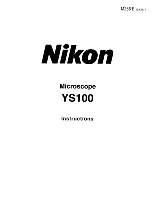
Spectral Imaging
The acquisition of spectral data becomes necessary
where the overlapping emission signals of multiple-
labeled specimens have to be separated, or where
the cellular parameter to be measured is coded by
changes of the emission spectrum (e.g., FRET and
ratio imaging of ion concentrations).
The LSM 510 META is a system for the fast acqui-
sition of images of high spectral resolution. The
hardware enabling this functionality consists of a
spectrally dispersive element, a photomultiplier
(PMT) with 32 parallel detection channels (META
Detector), and special electronic circuitry for
detector control and signal amplification.
Whereas the beam paths for conventional and
META detection are identical on the excitation
side, the emission beam for spectral detection,
after having passed the pinhole, hits a reflective
grating. The grating spreads the beam into a spec-
trum and projects it onto the surface of the linear
detector array. Each of the 32 PMT elements in
that array thus registers a different part of the
spectrum, each part having a width of 10 nm. The
result is a lambda stack of XY images in which
each image represents a different spectral window.
META Detector
Part of the beam path in the
LSM 510 META scanning head
1 Confocal pinhole
2 Reflective grating for spectral
dispersion
3 META Detector with
32 separate PMT elements
14
The procedure for a lambda stack
1
Select the spectral range in the
Lambda-Mode
2
Activate the excitation laser lines
3
Carefully control the dynamic range to avoid over- and underexposed pixels
(Range Indicator)
4
In multiple-labeled specimens, vary the power of the respective laser lines instead of the
Amplifier Gain,
in order to match the signal intensities of the fluorochromes
5
Record the lambda stack
6
Display the data in one of the modes:
Gallery, Single, Slice, Max
or
λ
-coded
1
2
3
















































